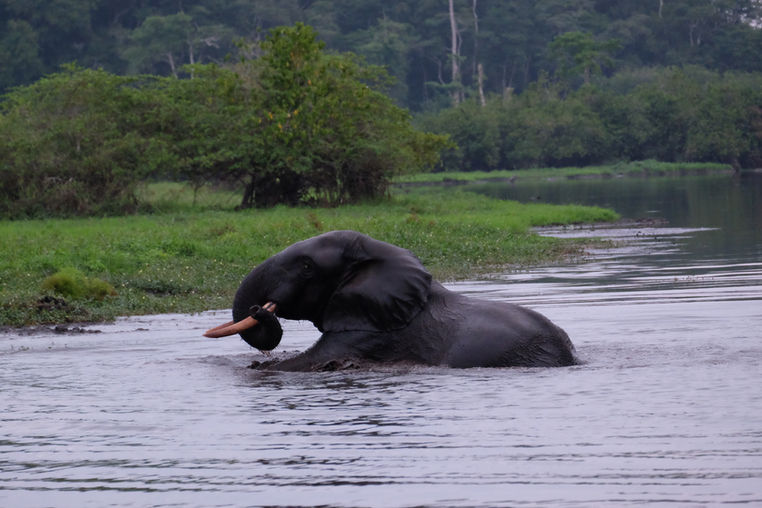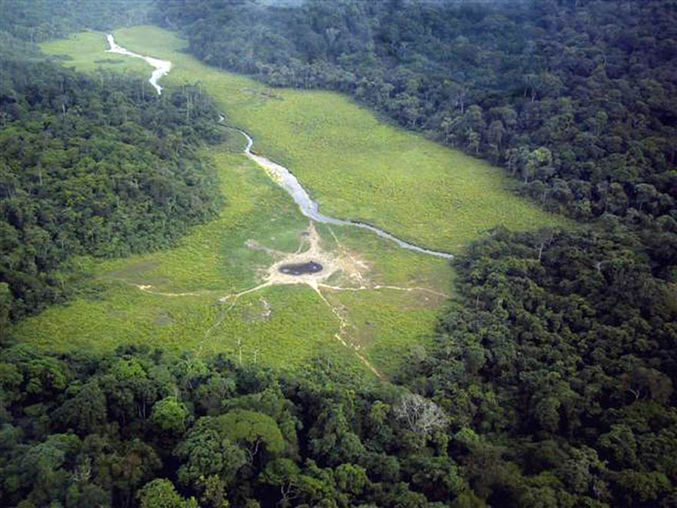
The Wildlife of Gabon
Gabon’s wildlife diversity is really something special. From Strikingly vibrant Mandrills, Western Lowland Gorillas, and Forest Elephants deep in the jungles to Humpback whales and Dolphins in the Oceans, this tiny country has so much packed into its 13 National Parks, 9 National Marine Parks, and 11 Aquatic Reserves,
ANPN (Agence Nationale des Parcs Nationaux) the National Park’s Agency work in collaboration with NGO’s to protect the wildlife through on the ground patrols & presence, research, and tourism.
This is just the “tip of the iceberg”…Gabon boats a multitude of exciting species within its myriad of habitats: Stunningly elegant Sitatunga antelope, Red River Hogs full of charm and character, Forest Buffalo - who also visit the beach, Enchantingly pretty Leopards, rare Pangolins with their armour like scales, snakes of varying sizes and toxicity (beware of these, especially the Gabon Viper!), and a whole host of intriguing beetles, bugs, Spiders (non-toxic), lizards, and more! All keeping the rainforest alive.


Hippos in Gabon were famous for their beach visits at Petit Loango some years back when National Geographic documented them surfing the waves. This is a rare yet unforgettable spectacle and no one really knows why they do this. It is unlikely that you will see hippos on the beach, just a small handful of incredibly lucky people see this each year. Reporting the similarities of them to horses making frantic trots from the sea to the forest!
In the parks that border the coast you can observe hippos in the lagoons and bais. Gorilla, hippos and elephants all in one place, what rare treat!
The hippo above was discovered while director, Donna Honey, was following gorillas through a swamp. A little too close for comfort!
Primates in Gabon bring the forests to life, from the trees to the floor. Colourful monkeys: Mangabeys & Guenons, and cute little Talapoins travelling through dense canopies can be heard from afar as the branches they use to swing from tree to tree rustle and crack loudly. The rainforest’s apes - Gorillas and Chimpanzees -share these territories and can move surprisingly quietly, especially the shyer & more majestic of the two…the Gorilla. At other times the chimpanzees pant hoot (a hooting vocalisation) and hit trees to make impressive displays that carry though the jungle, impossible not to be heard.


A gorilla surprised by a human on a jungle hike will most likely run, unless this is a silverback, who may deploy a running charge while screaming. This is a display of strength and courage, designed to scare you away from his family, who he will protect at all costs. Run and the gorilla will give chase and the aggression may become heightened. Stand your ground and the gorilla will stop before he reaches you and simply walk or run away, somewhat bewildered, to rejoin his family.
Check out gorilla trekking blogs
Nocturnal primates, Pottos and Galagos, with their enormous bulging eyes can be spotted in the forests at night, out on their hunts for insects to devour.
Mandrills roam in huge hordes containing well over 100 individuals.
They cannot be found in all of Gabon's National Parks.
Lopé National Park is home to the largest recorded horde of Mandrills that was recorded... 1,300 individuals! With the average group there thought to be 615.
Lopé National Park is the only place in Gabon where you can successfully trek for truly wild Mandrills that have undergone habituation and have trackers fitted to assist in finding them for research & tourism.
There is only one other place in Gabon where you can be guaranteed to see Mandrills: Lekedi Private park, which offers the chance to get very close to these stunning primates. Here, there is a mixture of wild-born and introduced mandrills who receive food from staff when they are tracked. The Private park of Lekedi is fenced and divided by sectors which are visible when moving through the park, a very different experience to Lopé.
Check out our Mandrill Trekking Blog


Equatorial Birds are thriving in Gabon. In just one area alone there are 190 Guinea-Congo Forest biome-restricted species. More widespread species include Congo Serpent Eagle, Vermiculated Fishing-owl, Hartlaub’s Duck, Blue Cuckoo-Shrike, Yellow-capped Weaver, and many more. Species more elusive such as White-crested Tiger Heron, Maned Owl, Sandy Scops Owl, and Tessman’s Flycatcher are just a few that attract eager birdwatchers annually.
In the more coastal areas with blackwaters and lagoons there are famous breeding sites for African River Martins and Rosy Bee Eaters. The African River Martins can visit in their millions and once year create incredible displays in the sky at dusk. These same areas attract the African Finfoot.
Elephants are hard to miss in Gabon, where 50-60% of the world’s remaining 45,000 forest elephants reside, largely thanks to their protection inside the national parks, and also thanks to Gabon’s rainforest which still cover 88% of the country. These smaller versions of their cousins, the African elephant, move with such grace and carefulness that it is unbelievably easy to be metres from them in the rainforest and not even know that they are there!
As well as the rainforest, where the elephants are super adept at leaving the narrowest of paths while navigating, the bais, savannas, and even the beaches receive visits from these not so big “giants”.

_edited.jpg)

















